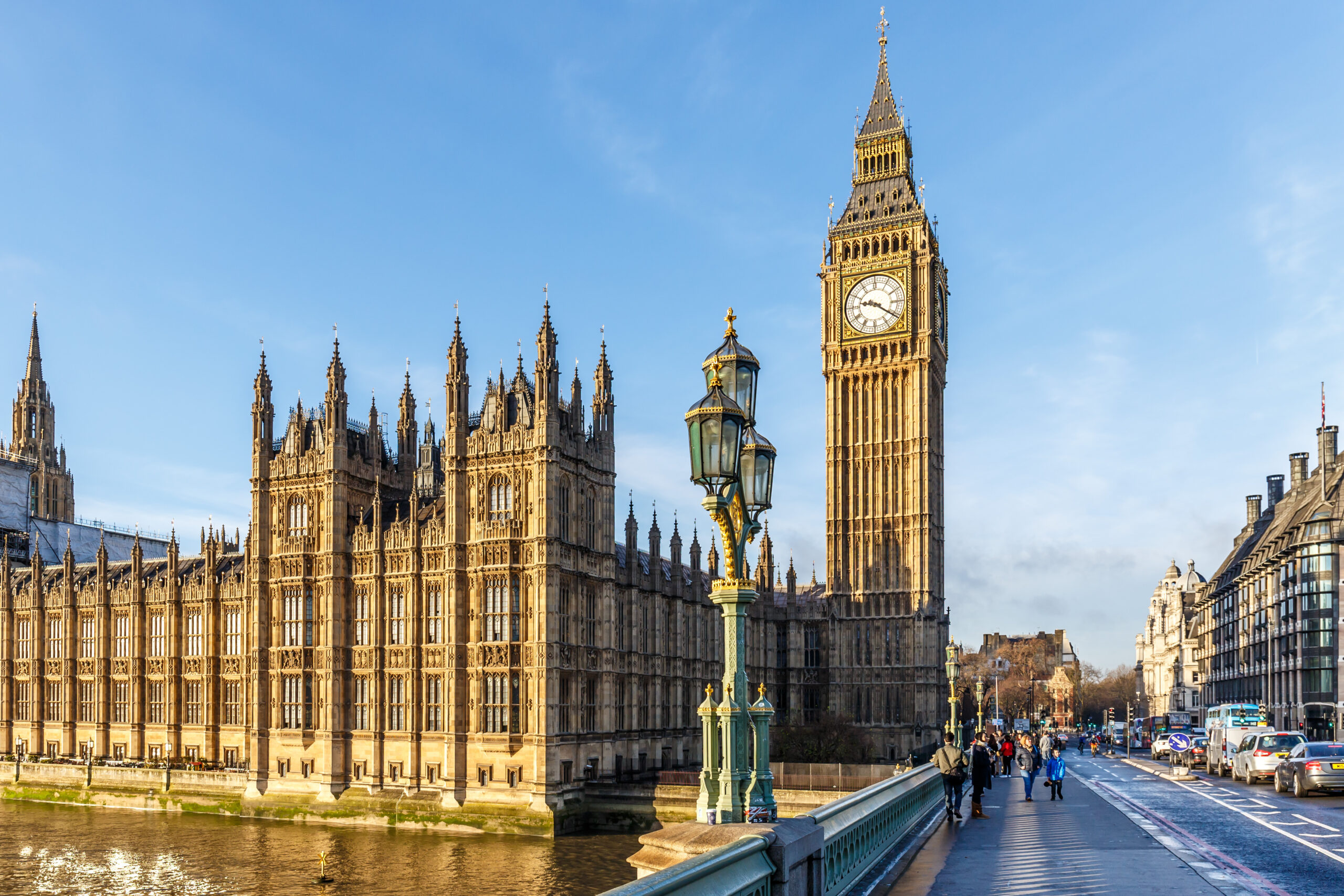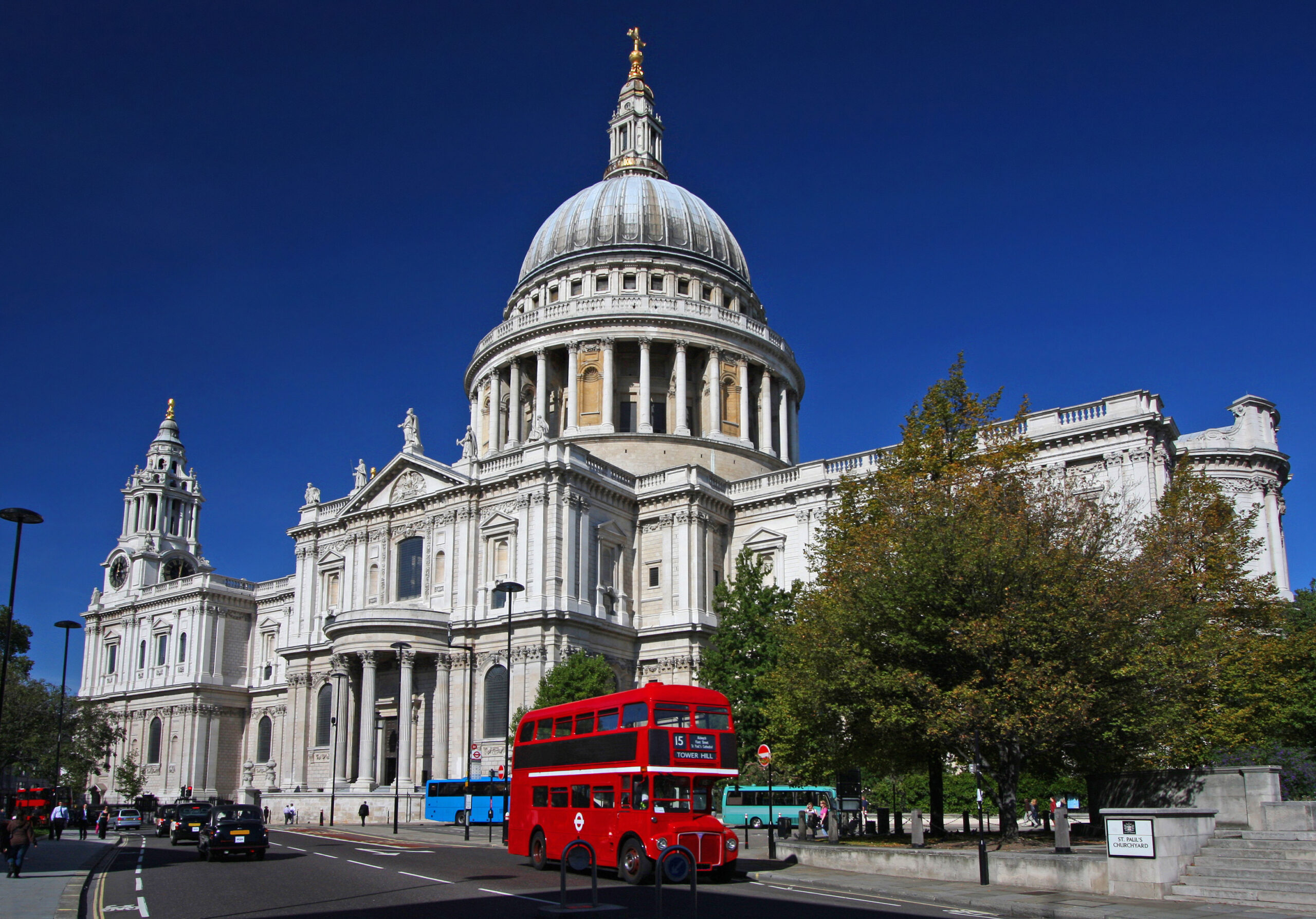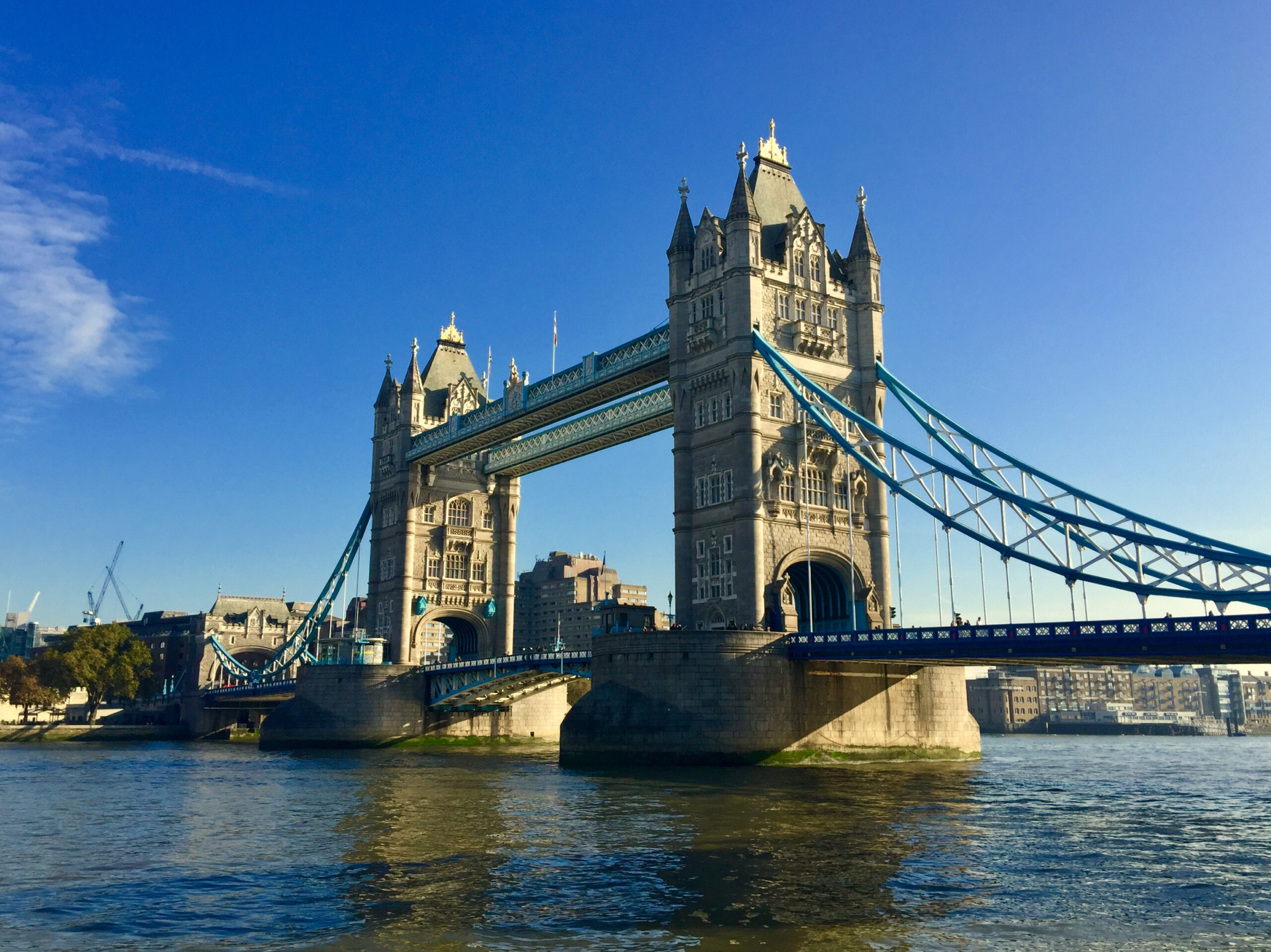LUXURY TOWER OF LONDON BUS TOUR
ITINERARIES: THE CITY (TOWER) OF LONDON
Step on to the red carpet and aboard LE GRAND for a luxury Tower of London Bus Tour. Indulge in gourmet menus by Robuchon, relax in plush interiors, and enjoy panoramic views with a multilingual guide—this is sightseeing, redefined.
The City of London (Tower) itinerary offers a captivating journey through the historic and cultural heart of London, showcasing its iconic London attractions and landmarks, royal heritage, and architectural diversity in unforgettable style.
This route takes you from the vibrant streets of Piccadilly to the historic Tower of London, passing through Trafalgar Square, St. Paul’s Cathedral, and the modern skyline dominated by The Shard.
During this sightseeing tour, you’ll experience London’s royal palaces, ancient Roman ruins, grand neoclassical buildings, and contemporary architectural marvels, offering a comprehensive view of London’s rich history and dynamic present.
DEPARTURE POINT
Green Park /Constitution Hill (Stop E)
DURATION
Luxury sightseeing bus tour lasts approximately 1 hour and 30 minutes
DEPARTURE TIME
4:30 PM. Please verify exact times when booking
Note: Due to road works and street closures, the itinerary may be subject to last-minute changes if we need to take different routes. We strive to provide the best possible experience while adapting to any unforeseen circumstances.

Highlights of Your Luxury TOWER OF LONDON BUS Tour
- Piccadilly
One of London’s most prestigious streets, Piccadilly has been a centre for high-end commerce, culture, and society since the 17th century. Originally a residential area for aristocrats, it evolved into a hub of exclusive clubs, luxury retail, and grand hotels. The street is home to Fortnum & Mason, Hatchards (the UK’s oldest bookshop), and The Royal Academy of Arts. It remains a vital artery, connecting the West End to Hyde Park Corner. - St James’s Palace
Built in the 1530s by Henry VIII, St James’s Palace is one of the oldest royal residences in the UK. Despite not being open to the public, it is still an active royal property and the official residence of several senior royals. Its Tudor brick exterior and Chapel Royal contrast with its historical significance as the site of royal births, deaths, and diplomatic ceremonies. The Accession Council meets here when a new monarch takes the throne. - Royal Automobile Club
Founded in 1897, this private members’ club was instrumental in advancing British motoring culture. The club successfully lobbied to increase the UK speed limit from 4 mph to 20 mph, marking a key moment in automobile history. Its Palladian-style clubhouse on Pall Mall features a marble swimming pool, fine dining rooms, and a private library. Membership remains highly exclusive, and the club continues to celebrate the engineering and racing heritage of Britain. - Trafalgar Square
Since its completion in 1844, Trafalgar Square has been London’s focal point for national celebrations, protests, and cultural events. It commemorates the British victory at the Battle of Trafalgar (1805) and features some of the city’s most recognizable sculptures, including the four bronze lions and the Fourth Plinth art installations. The square also houses the smallest police station in London, built inside a lamp post in the 1920s. - The National Gallery
Founded in 1824, the National Gallery is home to over 2,300 paintings spanning Western European art from the 13th to 20th centuries. Unlike many other national galleries, its collection was acquired for public ownership, making it one of the world’s few major art institutions with free entry. Among its most famous works are Van Gogh’s “Sunflowers,” Turner’s “The Fighting Temeraire,” and Leonardo da Vinci’s “The Virgin of the Rocks”. - Nelson’s Column
This 52-meter (169 ft) monument was erected in 1843 in honour of Admiral Horatio Nelson, who died at the Battle of Trafalgar. It is topped with a 5.5m statue of Nelson, made from sandstone, and flanked by four bronze relief panels cast from captured French cannons. The base is guarded by four bronze lions, sculpted using real lion carcasses from London Zoo as models. - Victoria Embankment
Constructed between 1865 and 1870, Victoria Embankment is both a major engineering project and an iconic riverfront promenade. Designed by Sir Joseph Bazalgette, it was built to house London’s first underground sewer system, significantly improving public health. The area includes memorials, gardens, and government buildings, and was once home to London’s first electric streetlights. - Somerset House
Originally a Tudor palace, Somerset House has undergone several transformations, serving as a royal residence, navy headquarters, and art institution. Today, it is known for seasonal events, including London’s most famous ice-skating rink in winter. The grand neoclassical façade overlooks the Thames, while its underground spaces house remnants of the old Tudor foundations. - Royal Courts of Justice
Completed in 1882, the Royal Courts of Justice is one of the largest and most significant judicial buildings in the UK. Designed in the Gothic Revival style by George Edmund Street, it houses the High Court and Court of Appeal of England and Wales. Its intricate stone carvings, towering vaulted ceilings, and elaborate stained glass windows make it as visually striking as it is historically important. Open to the public, visitors can explore the grand corridors and witness live legal proceedings, offering insight into the British judicial system. - St. Paul’s Cathedral
Designed by Sir Christopher Wren, St Paul’s Cathedral was completed in 1710 after the previous church was destroyed in the Great Fire of London (1666). Its dome stands at 111 meters (365 ft), making it one of the largest in the world. The cathedral has hosted state funerals, royal jubilees, and the wedding of Prince Charles and Princess Diana. - Eastcheap
Once a lively medieval marketplace, Eastcheap was famous for its butchers, taverns, and merchants, frequently referenced in Shakespeare’s plays, including Henry IV, where it was home to the fictional Boar’s Head Tavern. In the 19th century, it became a hub for insurance and shipping firms, and today, it features a blend of historic architecture and modern office buildings. Several original Victorian-era shopfronts remain, offering a glimpse into its commercial past within London’s financial district. - Tower Hill
For centuries, it was the primary location for public executions, where nobles and traitors, including Thomas More and the Duke of Monmouth, were beheaded before large crowds. Today, visitors can see the execution memorial, as well as preserved sections of the old Roman wall, which once marked the boundaries of ancient Londinium. The area provides panoramic views of the Thames and historic landmarks, making it a key spot for understanding the city’s past. - Tower of London
Founded in 1066 by William the Conqueror, the Tower of London has served as a fortress, royal palace, prison, and treasury. It is infamous for its role in royal executions and imprisonments, including Anne Boleyn, Guy Fawkes, and the Princes in the Tower. Today, it houses the Crown Jewels, protected by the Yeoman Warders (Beefeaters). - Tower Bridge
Opened in 1894, Tower Bridge is a combined bascule and suspension bridge that allows ships to pass while maintaining traffic flow. Its twin towers are connected by glass walkways, offering panoramic views. The bridge was originally powered by a steam-driven hydraulic system, later replaced with electricity. - Tooley Street
Historically a centre for warehousing and river trade, Tooley Street played a crucial role in London’s maritime commerce. By the 19th century, it was lined with wharves, warehouses, and merchant offices, many of which were later repurposed into modern commercial spaces. Despite significant redevelopment, remnants of its industrial heritage remain, including Hay’s Galleria, once a tea and produce warehouse, now a bustling shopping and dining destination. - The Shard
Completed in 2012, The Shard is London’s tallest building at 310 meters (1,016 ft). Designed by Renzo Piano, its 95 stories house offices, a hotel, luxury apartments, and The View from The Shard, an observation deck offering unmatched 360° views of the city. Its glass-clad façade is designed to reflect the sky and adapt to changing light. conditions. - London Bridge
One of the most historically significant crossings of the Thames, London Bridge has been rebuilt multiple times since the Roman era. The current bridge, opened in 1973, replaced the 19th-century stone structure, which was sold to an American businessman and relocated to Arizona. Unlike Tower Bridge, London Bridge has a simple design, but its strategic location has made it a vital transport link throughout London’s history. - Monument to the Great Fire
Standing 61 meters (200 ft) high, this column was designed by Christopher Wren to mark the spot where the Great Fire of London began in 1666. Visitors can climb its 311 spiral steps to reach a viewing platform with panoramic views of the city. The base inscription details the devastation of the fire and London’s reconstruction efforts. - Mansion House
Mansion House Built in 1739–1752, Mansion House is the official residence of the Lord Mayor of London. This grand Palladian-style building was designed to host lavish banquets, civic ceremonies, and state receptions. It houses the Harold Samuel Collection, featuring over 80 Dutch Golden Age paintings. The building remains a symbol of the City of London’s economic and political influence, with its interiors largely unchanged since the 18th century. - Bank of England
Established in 1694, the Bank of England is one of the world’s oldest financial institutions. Known as the “Old Lady of Threadneedle Street”, it has played a crucial role in British monetary policy and financial stability. The Bank of England Museum houses a 400-ton gold vault, where visitors can touch a real gold bar. - London Mithraeum
Buried beneath modern London, the Mithraeum is a Roman temple built in the 3rd century AD, dedicated to the god Mithras, a deity associated with mysticism and secret religious rites. Discovered in 1954 during post-war reconstruction, it has been meticulously restored, offering a multi-sensory experience that transports visitors to the world of Roman Londinium. Original altar stones, sculptures, and artifacts are on display, while a dramatic lighting and sound installation recreates the atmosphere of ancient rituals. - College of Arms
Founded in 1484, the College of Arms is the official heraldic authority for England, Wales, Northern Ireland, and much of the Commonwealth. It oversees the granting and regulation of coats of arms and genealogical records. The building, rebuilt after the Great Fire of London (1666), remains a working institution, preserving centuries of heraldic history. Today, it continues to assist with royal and state ceremonies, including coronations. - Tate Modern
Housed in the former Bankside Power Station, Tate Modern is one of the world’s most influential contemporary art museums. Opened in 2000, it showcases modern and contemporary works from artists like Picasso, Warhol, Hockney, and Rothko. The Turbine Hall, a vast industrial space, hosts large-scale installations that redefine the visitor experience. The museum’s Blavatnik Building offers a rooftop terrace with panoramic views of London’s skyline. - Temple Place
An area rich in legal tradition, Temple Place is home to the Inner Temple and Middle Temple Inns of Court, where barristers train and practice. The Temple Church, dating back to the 12th century, was built by the Knights Templarand remains one of London’s most historically significant religious sites. The area’s narrow alleyways, historic courtyards, and legal chambers offer a glimpse into England’s centuries-old legal system. - Egyptian Obelisk (Cleopatra’s Needle)
Erected in London in 1878, Cleopatra’s Needle is an ancient Egyptian obelisk dating back to around 1450 BC. Originally commissioned by Pharaoh Thutmose III, it was later inscribed with hieroglyphs by Ramses II. The obelisk was gifted to Britain in recognition of its victories over Napoleon in Egypt. It was transported in a specially designed iron cylinder, surviving a severe storm at sea. The monument is flanked by two bronze sphinxes with visible bomb damage from World War II. - Northumberland Avenue
Constructed in the late 19th century, Northumberland Avenue was once home to grand mansions of the aristocracy, including the Duke of Northumberland’s residence. By the 20th century, it transformed into a hub for government buildings, luxury hotels, and diplomatic offices. Today, it remains a prestigious thoroughfare, connecting Trafalgar Square to the Thames Embankment.
Immersive Audio Guide
The multilingual audio guide enriches your experience during the luxury sightseeing bus tour with engaging and informative commentary on the city’s most iconic landmarks. Whether you’re a history enthusiast, a first-time visitor, or simply curious about London’s architecture, the guide offers something for everyone.
- Professional Narration: Compelling storytelling brings each landmark to life
- Historical and Cultural Insights: Discover the hidden stories and rich history behind London’s famous sights
- Multilingual Support: Available in English, French, German, Spanish, Italian, Russian, and Chinese
- Seamless Experience: The guide automatically syncs with your journey, ensuring you never miss a key attraction
TOWER OF LONDON BUS TOUR LUXURY SIGHTSEEING BOOKING INFORMATION
- Tour Prices: Trip Tickets start at £40 per person, varying by seat selection
- Gourmet Bites and Drinks: Available at an additional cost
- Afternoon Tea London Bus Menus: Choose from our Traditional Afternoon Tea or indulge in Special
- Punctual Departures: The tour will begin promptly at the time stated in your booking confirmation
- Arrival Time: Please arrive at the departure point at least 15 minutes before your scheduled time to ensure a smooth boarding process
- Route Notice: Tour routes may vary due to traffic conditions or road closures
Standard London hop-on hop-off bus tours can’t compare. LE GRAND redefines sightseeing with a refined, immersive journey through London’s most iconic landmarks. Unlike open-top buses that leave you exposed to the elements, LE GRAND ensures a luxurious, weather-proof experience—rain or shine. Book tickets today – gourmet upgrades available at checkout.
BOOK YOUR LUXURY AFTERNOON TEA AND SIGHTSEEING BUS TOUR NOW


